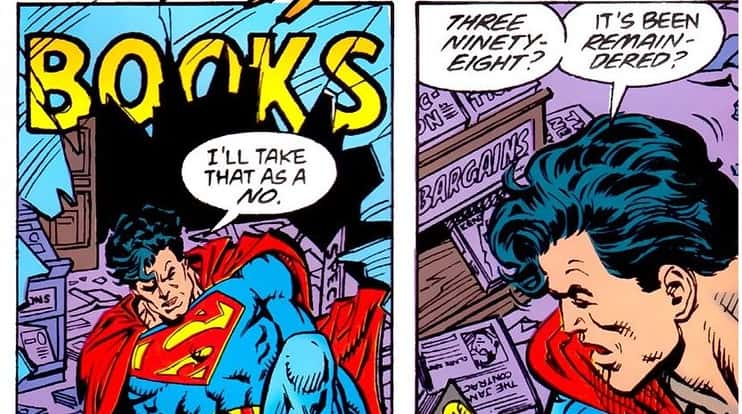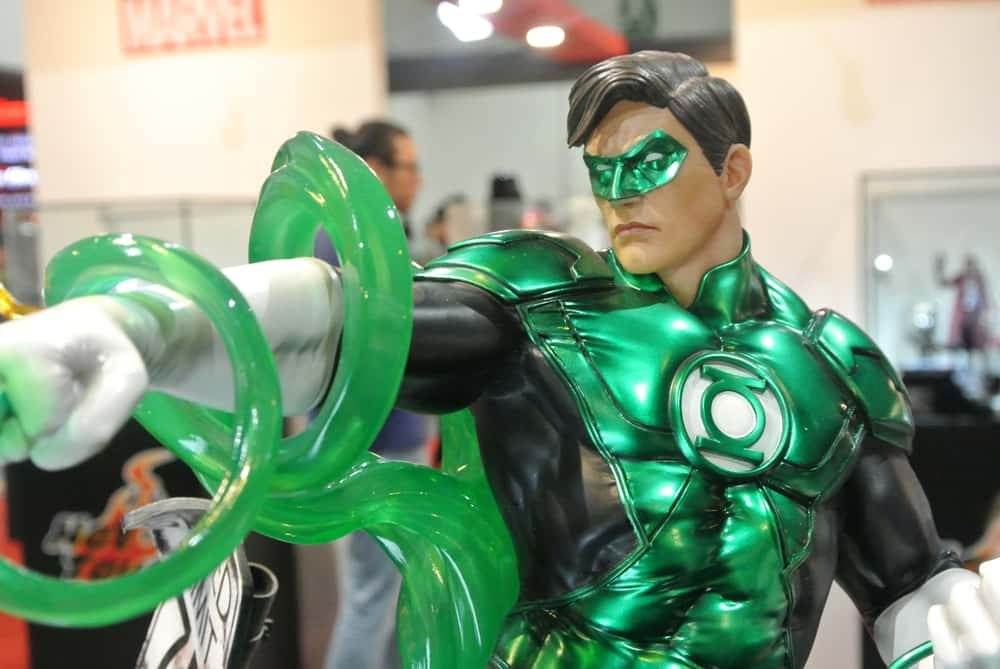"Superheroes are best imagined in comic books. The union between the written word, the image, and then what your imagination has to do to connect those allows for so much".—Ta-Nehisi Coates.
Comic book movies dominate the box office at the moment, with adaptations pouring into theatres every summer. From the X-Men films, to DC, to Marvel’s dynasty, the box office success of these films makes it clear that people love seeing these characters on screen. However, you don’t hear about people reading the source material as much. Every new film release separates those who read comic books from those who don’t. Here are 42 inked facts about comic books.
43. Draw the Line
Alan Moore’s Watchmen is famous—at least among comic readers and critics—for its layered portrayal of vigilantes. Moore originally wanted to use DC characters, such as The Question and Blue Beetle, but DC forced him to create his own characters when Moore notified them he intended to end some of the characters off.
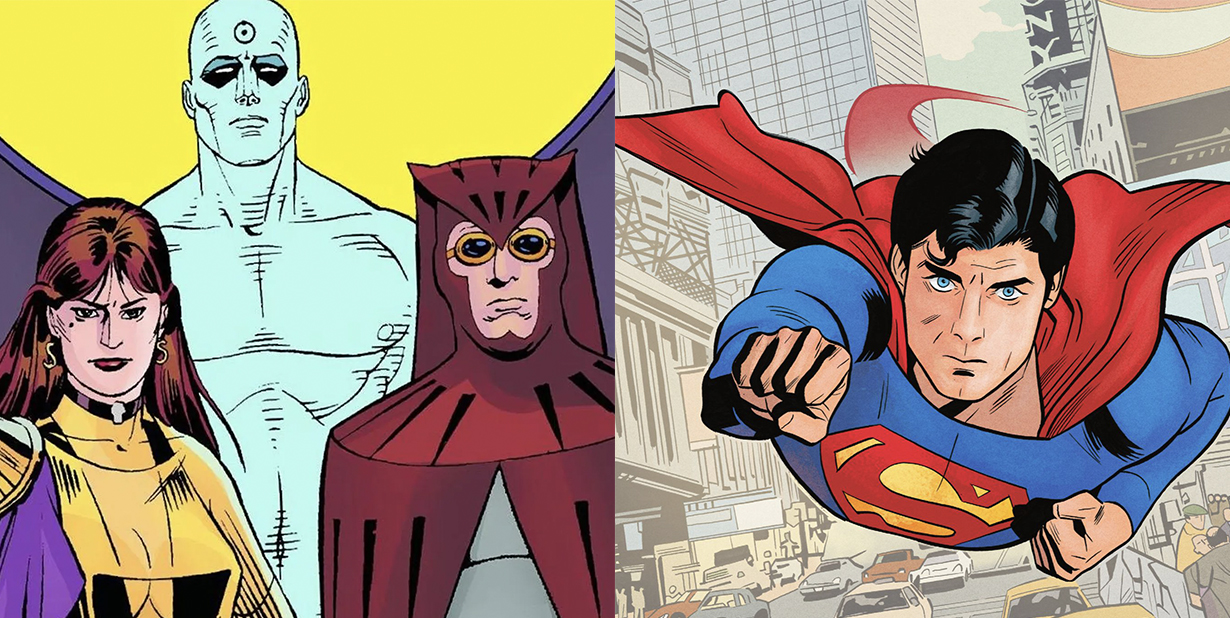
42. Marvelous
Marvel still reigns as the best-selling comic book company, based on unit sales as of 2017. DC comes in at second place and Image Comics (The Walking De*d, Spawn) comes in at third. The stats given are calculated by the share of the market, Marvel stands at 38.3%, DC at 33.93% and Image with 10.12%.
41. Newspaper by Day
When we think of comic books today, word association might lead us to super-powered characters or maybe more modern takes that subvert that trope like Watchmen. The term “comic book” simply came from newspaper comic strips, where the medium got its early start.
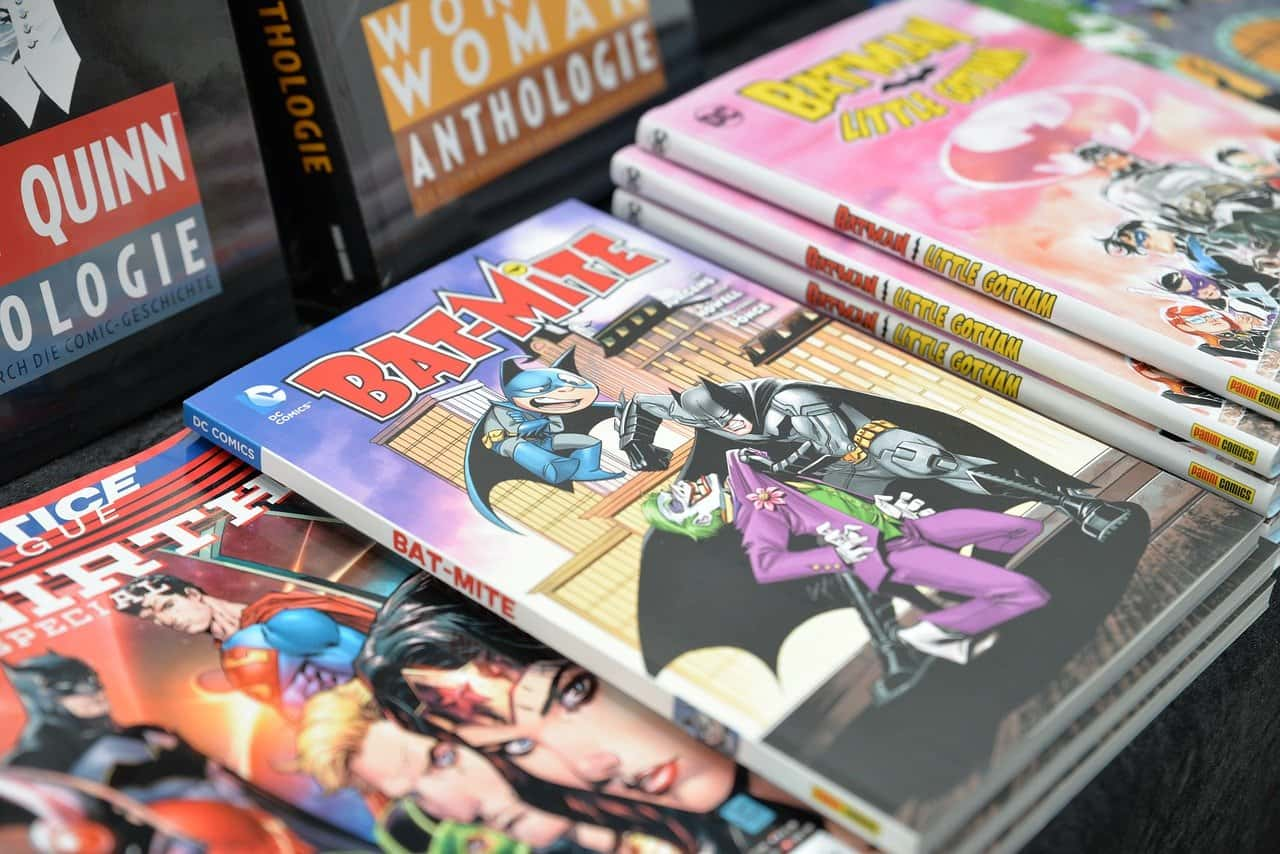 Flickr
Flickr
40. Started From the Bottom
For those who read modern comics, you might get the desire to go old-school and read the older ones sometimes. If you are reading comics from the ‘40s and ‘50s, you might notice that the art could use some work. It isn’t just a case of standards changing overtime, it’s also an issue of comic book publishers not having the clout or inclination to attract serious artists at that time.
39. Nothing but a Number
Comics—mainly Marvel and DC ones—are generally grouped into six distinct eras or “ages". The Golden Age lasted from 1938 to 1955. This era introduced the superhero archetype with characters like Superman and other iconic figures like Batman, Wonder Woman and Captain America.
Due to WW2 influence, many of these characters actually fought real-life villains, such as Captain America fighting Nazis. Therefore, these comics also had more simplistic notions of good and evil: Clear cut good and bad guys with less of the moral ambiguity we are used to now.
The Golden Age also saw the introduction of genres such as sci-fi and Westerns to the comic book industry.
The Silver Age (1956-1970) marks a greater peak in popularity for comics compared to the Golden Age. As a result, comics begin to receive more scrutiny and regulation. This era sees the introduction of characters like Spider-Man and The Fantastic Four.
The Modern Age (1985- Present) is mainly characterized by the popularity of anti-heroes such as Wolverine and the emergence of more psychologically complex characters, such as those we see in Watchmen.
The ages themselves are subject to some scrutiny—some people believe that the term Modern Age shouldn’t be used since it won’t stay modern as time passes. Some sources say the Modern Age began in the 2000s and was preceded by other ages such as The Steel Age or The Image Age, acknowledging Image Comic’s influence in popularizing darker comics. However, most sources seem to agree these are the main three. We already knew comic book fans like to argue, so there’s no surprise here.
38. So Seductive
German psychiatrist Fredric Wertham was one of the figures who helped to desegregate schools in America, with his studies on the psychological effects of segregation being used in the case against segregation. However, comic book fans probably just know Wertham as the man who published Seduction of the Innocent. In his book, Wertham criticized the aggression and suggestive sensual content in comics, ranging from Tales of the Crypt to superhero stories. Wertham’s most famous critique is that the Batman and Robin relationship had homoerotic undertones. Wertham’s book led to the Comic Codes Authority, a new set of laws that banned things such as representations of public figures and any references to cannibalism or the “walking de*d".
37. The D is Silent (But Not Really)
Did you ever wonder if DC actually stands for anything? It actually stands for Detective Comics, so when you say "DC Comics," you're really saying Detective Comics Comics.
 Wikimedia.Commons
Wikimedia.Commons
36. Faster than a Locomotive
Superman was the first super-powered character to appear in comic book form. Action Comics #1—Action would later become DC—debuted the character on April 18, 1938. An original copy of this comic was sold on eBay for $3.2 million in 2014.
35. Caged
Nicholas Cage was set to play Superman in Tim Burton’s Superman Lives, which thankfully never saw the light of day. Cage is also a comic book fan and had his own version of Action Comics #1, Superman’s debut story. The comic was stolen in 2000 but was reunited with its owner in 2011 when it was found in a storage locker in California.
34. Like Fine Booze
Peter Parker may have been “born” in the ‘60s, but he took a while to reach adulthood. Superman may be over 70 years old but he’s still spry. Comic book characters don’t tend to age the same way readers do, but John Constantine, AKA Hellblazer, has actually aged in real time since his debut in 1985, as per his creator’s orders.
33. Superlaw
The worlds superhero and super-villain might seem generic now, but Marvel and DC comics actually have trademarks on them. By 1979, this copyright was already in place and was actually refiled. Copyright law says that generic words can’t be copyrighted but since Marvel and DC helped to create the concept of a superhero, they were able to argue that the word was tied to their companies. While the word “superhero” can still be used in a comic book, it can’t be a part of the comic’s name. The two giants were willing to work together to try to crush competition from other competitors like Image and Vertigo comics. Typical American story.
32. Next Stop: Hollywood
Before comic book movies became a mainstay in the movie adaptation game, they were still inspiring big directors. The famous Raiders of the Lost Ark escape scene featuring the idol and the giant rock was actually inspired—or ripped-off, depending on how you look at it—from a 1954 Scrooge McDuck comic. The Seven Cities of Cibola also features the removal of an idol, followed by the triggering of a giant rock that nearly kills the would-be thief.
31. Close Call
One comic book giant we all know is Stan Lee. He’s now one of the most famous creators in the comic industry, but he nearly quit before he made his mark. The comic industry was struggling in the early 1960s and Lee told his wife he wished to quit and leave his position with Marvel. It was Joan who told him to try writing a comic he liked, as opposed to filling in for Captain America. Lee then created The Fantastic Four, Spider-Man, and the X-Men. These characters recaptured people’s imaginations due to their relatability—the X-Men were attack for their differences and The Fantastic Four were basically a dysfunctional family.
30. Fickle Friends
Since some of the earliest comic book superheroes began fighting Nazis, like Wonder Woman and Captain America, it isn’t too surprising that their popularity waned immediately following WW2. Additionally, the post-WW2 era likely had less fodder for uplifting propaganda, opening the medium up to critiques about aggresson and its influence on children.
29. Told You Batman’s Better
The Superman vs. Batman debate may rage on forever. Who would beat who in a fight? Who is the better hero? However, stats tell us Batman has appeared in more issues of comics. The stats include all appearances, including team comics and guest appearances. Batman stands at 14,385 issues while Superman stands at 13,164. Wolverine (12,912), Spider-Man (12,614) and Captain America (9,139) round out the top of the list.
28. Comic FedEx
We might know the biggest comic book publishers, but we probably don’t think about how comics are actually shipped. Diamond Distributors began in 1982 and has since developed a monopoly on comic book distribution in the US. While this may work for the bigger publishers, such as Marvel or Image, it can make distribution for any independent publishers difficult. Diamond’s monopoly also gives it a say in what titles continue to ship and what titles get canceled. In 1997, The Department of Justice actually launched a three-year investigation into the monopoly but deemed it lawful since it only affected comic books.
27. ‘Murica
The Justice Society of America (JSA), a Golden Age predecessor to the Justice League, were the first superhero team to appear in comics with a 1940 debut. DC Comics used their All-Star Comics imprint to publish the original JSA and the comic only featured characters that didn’t have their own series at the time, like The Flash. Characters like Batman and Superman were called honorary members at one point. Writers eventually made changes to the story (or retconned it) to say that the Justice Society existed on a different earth than the Justice League did. The Justice League would come along later in the Silver Age, with a different stable of characters.
26. The One
The Flash we see in the Justice Society of America is actually a different version of The Flash than we would get later in The Justice League. Nowadays, comic book reboots are somewhat common. The Marvel Universe got rebooted with its Ultimate comics, while DC has the New 52 and Rebirth.
The Flash actually marks the first reboot in superhero comics. In 1956, the Jay Garrick Flash from the Golden Age became Barry Allen of the Silver Age. He’s the most popular one to comic readers, as featured in The Flash TV show.
In Allen’s world, Jay Garrick was a fictional character. Allen’s powers later result in him accidentally going to another dimension and meeting Garrick, which introduced the DC Multiverse.
25. Pesky Copyright, Again
Comic book fans or anyone who’s watched the animated DC shows might remember Captain Marvel. No, not Marvel’s Captain Marvel.
DC has their own Captain Marvel as well. DC began with their own character but stopped making Captain Marvel comics in the 1950s. By the 1960s, the name was up for grabs and Marvel took it. Marvel then used the name for two different characters, the latter of which is finally getting adapted to an upcoming film starring Brie Olson.
In 1972, when DC began producing their Captain Marvel content again, they couldn’t use the original name in their titles or marketing. The character, a child who says the word “Shazam” to be transformed into a being with superpowers, became known as Shazam.
Still with me?
24. Abandon Ship
The third best-selling comic book publisher, Image, was actually founded in 1992 by seven of Marvel’s best-selling artists: Erik Larsen, Jim Lee, Rob Liefeld, Todd McFarlane, Whilce Portacio, Marc Silvestri, and Jim Valentino. McFarlane is also known as the creator of Spawn.
 Flickr
Flickr
23. Creator-Owned
Characters like Spider-Man and Batman are no longer written by their creators 50 years after their debut. Hordes of writers and artists come and go, while the rights to the characters remain with Marvel. In the case of Image and Vertigo comics, the works are original works owned by the creators with minimal creative control from Image or Vertigo’s board of directors. The creators of Image left mainly because they felt like Marvel’s royalties did not adequately compensate them.
22. Think It Through
The first issue of Spawn, in 1992, was the second comic that Image comics ever released. The comic was meant to be released in May but didn’t hit shelves until June due to organizational issues affecting Image. The idea that each creator owned their own work and was only united by the Image logo worked well for getting paid more, but the new founders had to deal with issues they normally didn’t touch like distribution.
21. Spotlight
Although superheroes may have led to the creation of comic books, a superhero comic isn’t actually the highest-selling comic book of all time. Micky Maus, a German series featuring Disney characters, still stands at #1 as of June 2018, with over 1 billion copies sold. British series The Beano comes in second with over 1 billion. Superheroes enter the list at #4 with Superman at 600 million and #5 with Batman at 600 million.
20. Pizza Time
The Teenage Mutant Ninja Turtles are likely best known from the 1990 film or the animated series that followed. Let’s not talk about the more recent films. The original film was actually heavily influenced by the dark and gritty tone of the 1980s comics. The turtles were meant to be a sort of satire of the dark tone and featured the turtles lethally dispatching their foes. A far cry from the fun, light-hearted pizza loving characters that we thought we knew and loved.
19. The Greatest
If an alien race invades Earth and asks to fight its greatest champion, who do you pick, Muhammad Ali or Superman? This bizarre question was the basic plot for a 1978 Superman vs Muhammad Ali series. By this point, figures such as JFK and Bob Hope had already graced Superman’s pages, so it wasn’t too surprising to see a celebrity facing off with Superman. In the story, the two fight on a fictional planet where Superman doesn’t have his powers, and Superman loses. Ali allegedly only let his image be used if his fictional self discovered that Superman was Clark Kent. He probably asked that he win too.

18. Some Type of Way
Comic Sans is apparently the red-headed stepchild of Microsoft Word fonts, evidenced by jokes like this: "Comic Sans walks into a bar, the bartender says, 'We don't serve your type.'”
Designer Vincent Connare was inspired by the font used in the two comics that were in his office, Watchmen and The Dark Knight Returns. In 1994, Connare was working on creating a new home PC software for Microsoft. Connare opened a test version of “Microsoft Bob” and didn’t like the Times New Roman font, so he elected to create something new. Guess he had never heard the phrase “if it ain’t broke, don’t fix it".
 Flickr
Flickr
17. Five-O
Marvel rebooted its universe with the Ultimate line of comics. In the Ultimate line, 616 is the officers code for a meta-human battle. Earth-616 is also the name given to Marvel’s original or mainstream line of comics.
 Pixabay
Pixabay
16. Corl
The Walking De*d is one of those shows that everyone has heard of. Whether you hate it, used to love it—like yours truly—or still love it, you can’t deny its popularity and true status as a pop-culture phenomenon. The comic might not have the same status, but its popularity, along with creator Robert Kirkman’s other works, made him the first non-founder to be invited to be on Image Comic’s board of directors. Don’t feel too bad for him.
15. Office Space
What do we know about the Hulk? Even if you’re not a big fan you now he’ll join the party if Bruce Banner is angry and that he’s (usually) green. However, the Hulk was originally supposed to be grey. The printing press kept messing up and printing the Hulk as green. Instead of deal with the issue for the foreseeable future, the Hulk stayed grey for a few issues before becoming green again.
14. The B Stands For
Brainiac is a word we can use to describe anyone who’s smart nowadays and some people may assume the word existed before Superman comics introduced a villain with the name in 1958. However, Superman comics came close to coining the term.
In 1956, a small kit for building simple computers was released, named Brainiac. According to a note from DC Editors at the time, they weren’t aware of the other Brainiac when they created their villain. We’ll never know for sure.
13. A-List
Aside from reading comics, Nicolas Cage also gets his stage name from them. Nicolas Coppola became Nicolas Cage thanks to inspiration from Luke Cage. One of Cage’s children is also named Kal-El. Sometimes, fact is stranger than fiction.
12. Take Stock
As of May 2018, computer engineer Bob Bretall has the world’s largest comic book collection. His house holds more than 100,000 issues, and one of Bretall’s strolls to his comic book shop led to a purchase of 480 new comics at one time. Bretall’s buying stretches back to 1970 so maybe you can beat him in a few decades if you start now.
11. Oops
Printing presses were generally not as clean back in the 1960s, so words had a tendency to blur together more. Words like “flick” and “Clint” could end up blurring the L and I, resulting in some, uh, racy words that weren’t exactly the writer’s intention.
 Pixabay
Pixabay
10. Long Day
The devil is in the details for comics. Everything from making sure the number of ridges on Batman’s bat symbol remain the same on every page, to making sure Green Lantern’s ring is drawn, to making sure a character’s race stays the same are all important things to keep an eye on for artists. The latter might seem like an easy one not to mess up, but you’d be surprised. A promo image for the DC reboot the New 52 featured a powered-up Green Lantern, sans ring, because the inker forgot to add it. The Walking De*d #179 also featured a black character who had not been colored properly in her first appearance.
9. It’s a Bird
We’ve all heard that Superman can leap tall buildings in a single bound, but we might not know that leaping was a substitute for flying when he debuted in the comics. It wasn’t the creators’ idea to make Superman fly, it was the idea of the animators of a 1940 Superman cartoon. Repeated leaping was more difficult to animate than flying. Sometimes something iconic can emerge from fatigue or laziness.
 Flickr
Flickr
8. Batman Survives
Batman’s creator Bob Kane allegedly said that the Adam West TV show saved the comics from cancellation since they led to a surge in popularity that saved the comics from poor sales. While the show doubled sales for 1966, Batman still put up respectable numbers with 453,745 comics sold in 1965. The Adam West show did help Batman comics become DC’s #1 seller, outshining Superman temporarily.
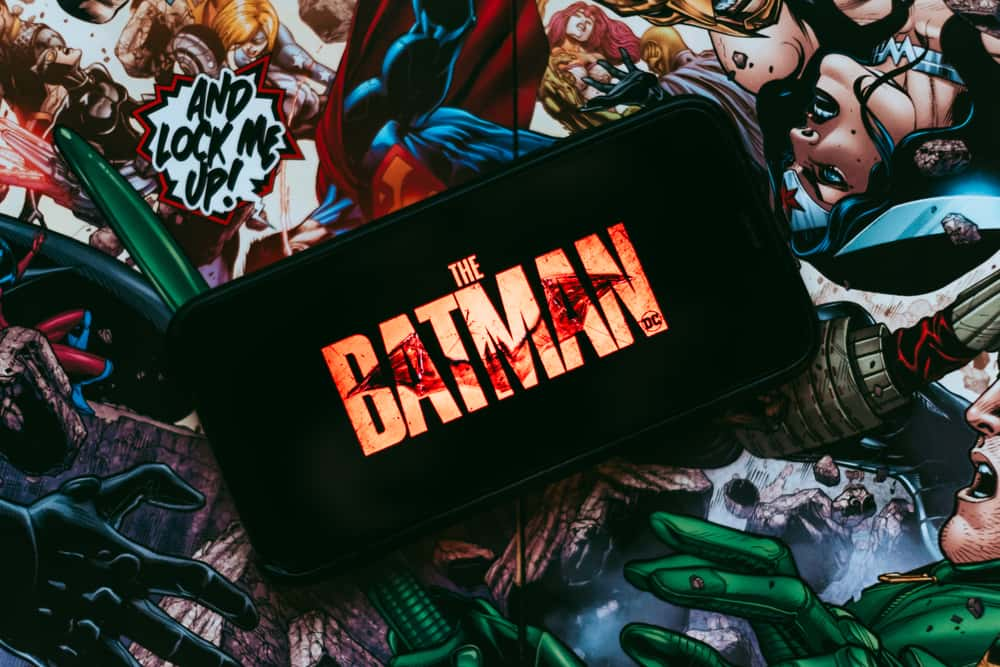 Shutterstock
Shutterstock
7. Merc
Everyone’s favorite Merc With a Mouth was created as a parody of DC’s Deathstroke. Co-creator Rob Liefeld was a fan of Slade since childhood and wanted to create a similar character to go against their biggest competitor, DC Comics. Both armed with swords, both highly-trained assassins. Slade Wilson’s Deathstroke found his sarcastic counterpart in Wade Wilson’s Deadpool. And no, Deadshot had no connection to either character.
 Flickr
Flickr
6. Branching Off
Vertigo is technically a competitor to DC comics, but the companies actually began as one and the same. Vertigo is still technically an imprint of DC, that caters to more adult fare. Titles such as Swamp Thing and Watchmen have existed in their own universe with Vertigo comics before rejoining with events like DC’s latest reboot, Rebirth.
5. Strength in Numbers
Aside from box-office records, Deadpool broke some records in 2014 for having the most characters on a cover. Deadpool #27 featured 236 characters. However, the award does have some controversy since G.I. Joe: America’s Elite features the same amount when animals are included. However, we can still give Deadpool the edge since some animals, like Dogpool, are legit characters. Some people also argue for Crisis on Infinite Earths since the cover features multiple versions of characters, like multiple Flashes (no pun intended).  Shutterstock
Shutterstock
4. Diversity Done Wrong
Extrano was a character created in the 1980s as part of the New Guardians. Flamboyant clothing and a lisp were just a few of the stereotypical traits Extrano was given. To make it worse, he passed due to AIDS, which he received from a bite by a villain known as Hemo-Goblin. To make it worse, Hemogoblin was a white supremacist whose power was to bite people of color and give them AIDS. Someone did not think this through.
3. Multi-Talented
Being a Harvard psychologist is a pretty good career in itself. Creating the world’s first lie detector in 1913 is also pretty good. Moving on from that to create Wonder Woman in 1941 is just showing off. In case you’re wondering, William Moulton Marston's lie detector was sort of like an early lasso of truth. Marston would take a subject’s blood pressure using a rubber tube, and a cuff that inflates around the subject’s arm. Marston claimed the test was 100% accurate, but later improvements to the process showed he was probably lying.
2. Subhuman
The X-Men comics center around the tenet that mutants, despite their powers, are human too and deserve all the same freedoms and rights. In reality, the action figures spawned from the comic classify the characters as non-human. Dolls are representations of people and have a 12% tax rate. Toys that represent non-human figures and have a federal tax of 6.8%. Hence, the X-Men are not human when it comes to toys.
 Flickr
Flickr
1. Illusionist
Mysterio might actually hold the title for the man who’s caused the X-Men the most pain, based mostly on his appearance in Old Man Logan. In one of the most brutal and horrifying moments in comics history, Wolverine wakes up one day to find the X-Men mansion overrun with enemies. He kills scores of super villains before Mysterio reveals that it had all been an illusion—Wolverine had in fact been ending all of his fellow X-Men, as well as the mansion's young students, as they begged for him to stop. Afterwards, Wolverine left the mansion and didn’t unsheathe his claws for 50 years, living as a shell of his former self.
Sources: 1, 2, 3, 4, 5, 6, 7, 8, 9, 10, 11, 12, 13, 14, 15, 16, 17, 18, 19, 20, 21, 22, 23, 24, 25, 26, 27, 28, 29, 30, 31, 32, 33, 34, 35, 36, 37, 38, 39, 40, 41, 42, 43, 44, 45, 46, 47



